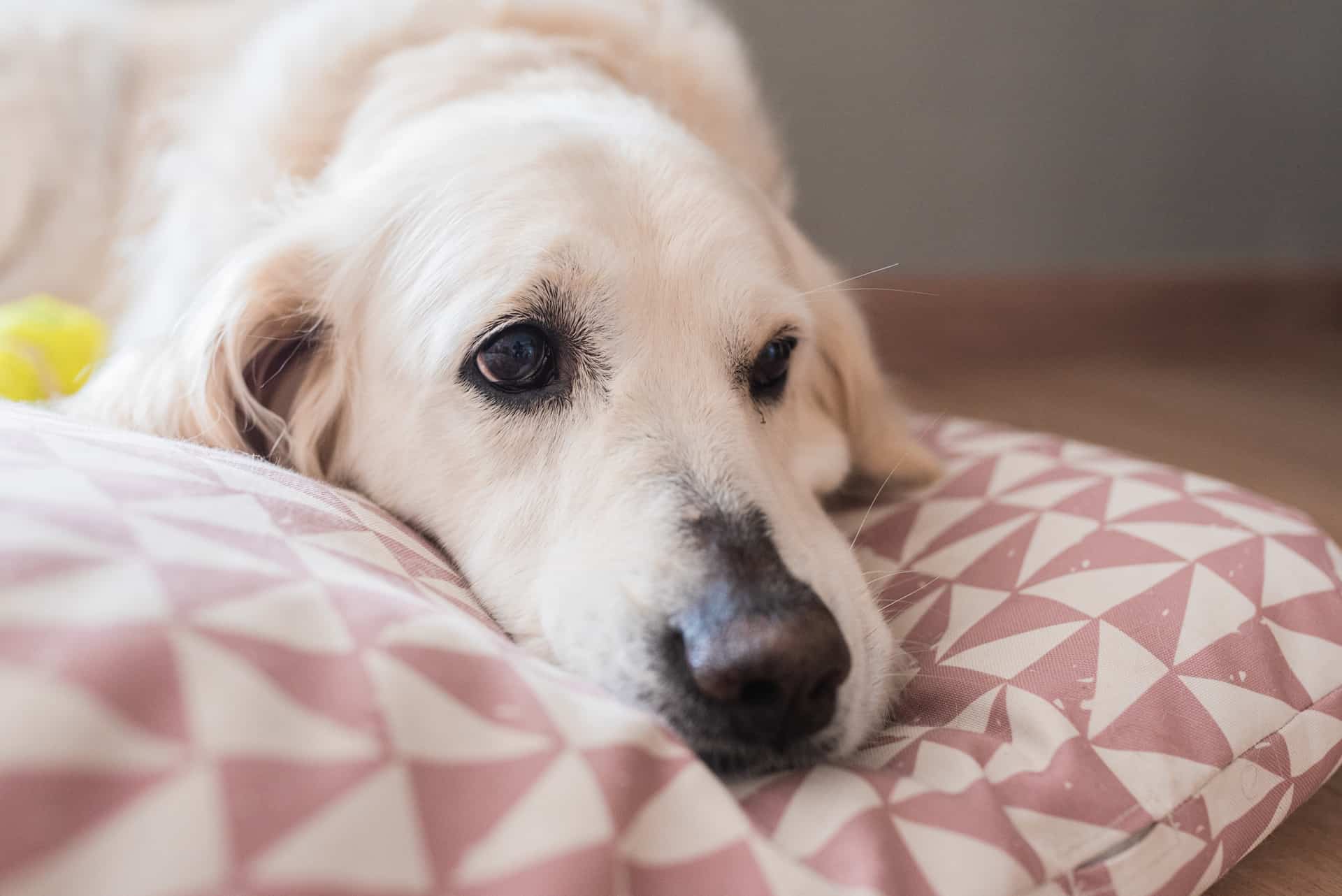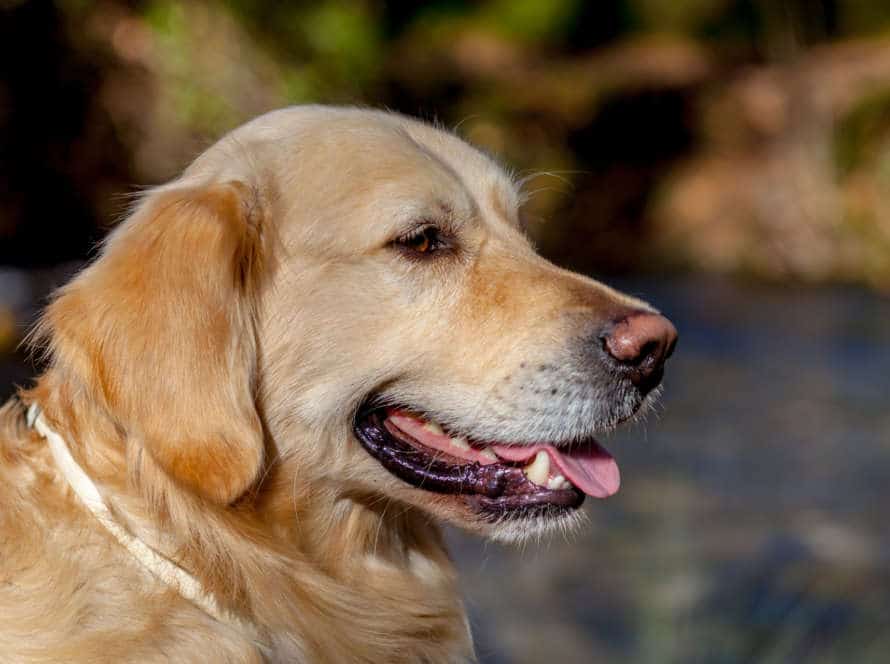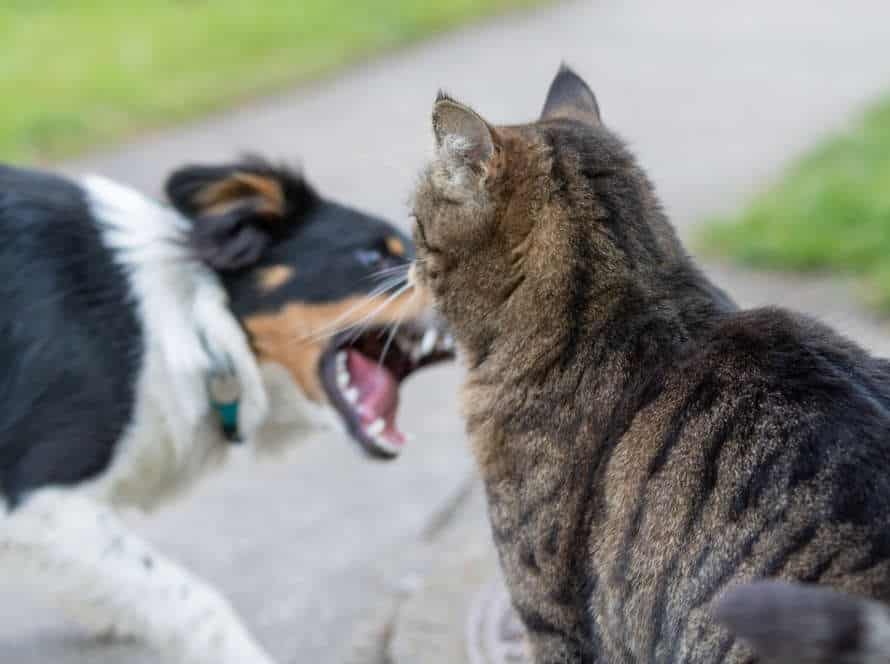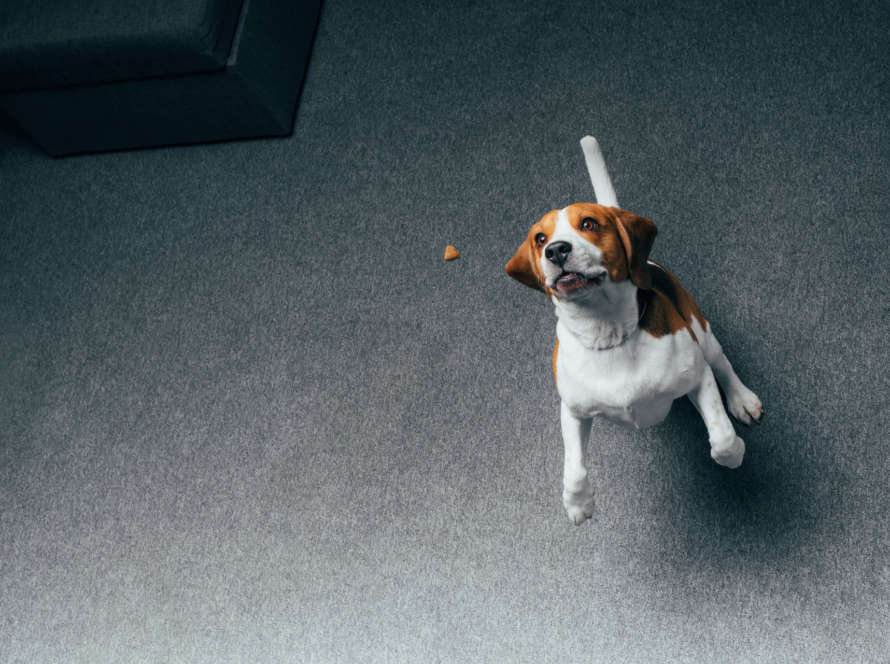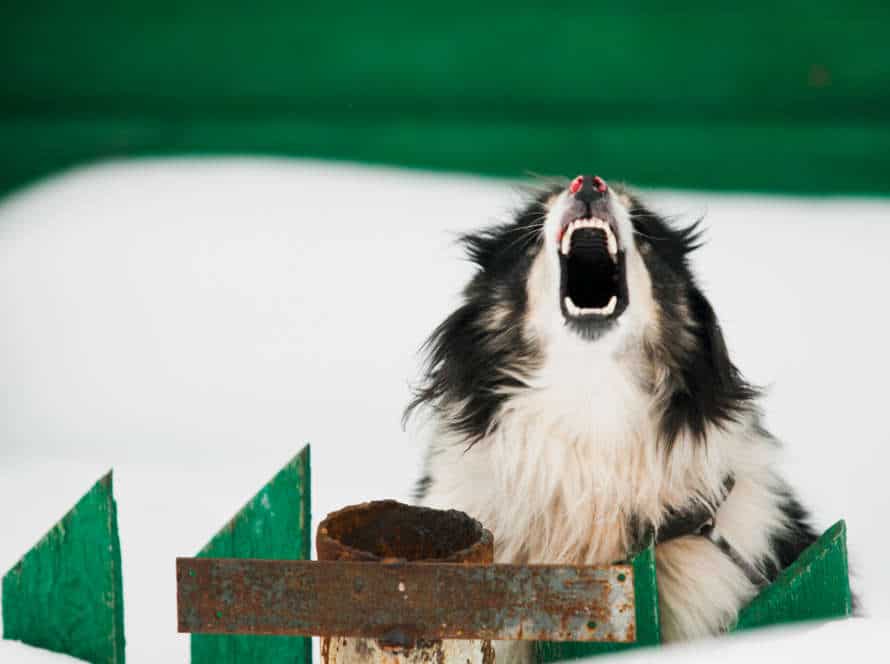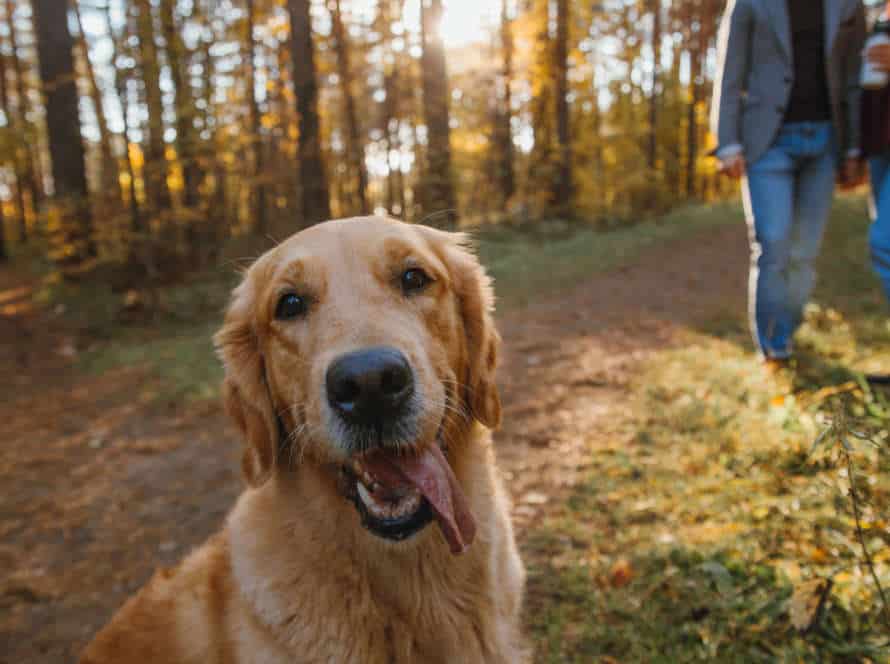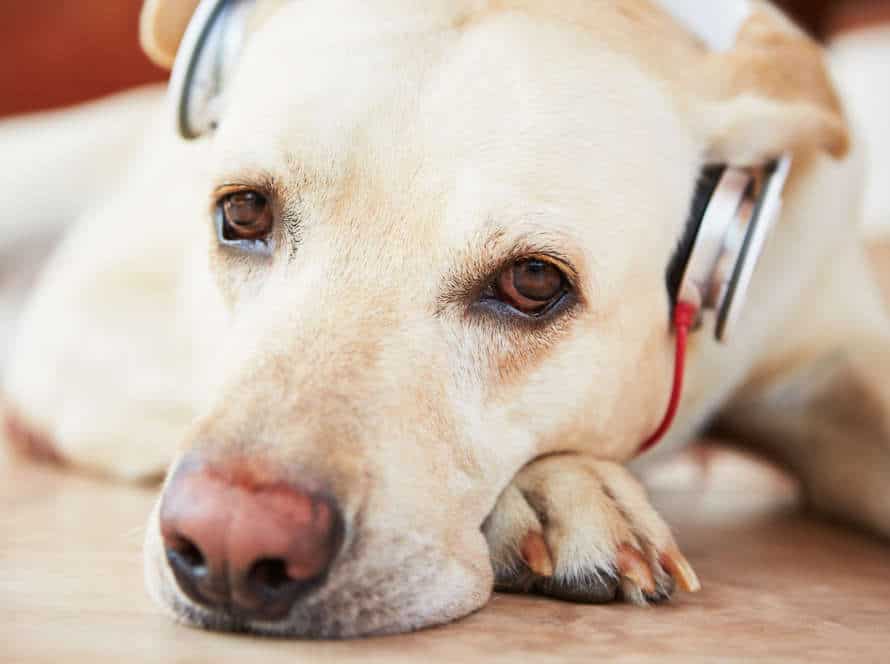How Life Changes Can Trigger Separation Anxiety in Adult Dogs
Life changes, such as moving or a new job, may cause adult dogs to have separation anxiety. This is a common condition that can affect any breed or age of dog. Signs that your pup may have it include:
- Digging/scratching doors/windows
- Barking/howling when alone
- Peeing/pooping indoors
- Chewing furniture/household items
If you think your pup has it, talk to your vet about diagnosis and treatment. Here are some tips for reducing anxiety:
- Increase time spent alone gradually
- Reward calm behavior/mental stimulation with toys/puzzles
- Create an area for your pup with a bed/familiar toys
- Get a dog walker/pet sitter if you’ll be away for a while
With care, patience, and the right treatment, your adult dog can conquer their separation anxiety and feel safe when left alone.
Understanding Separation Anxiety in Dogs
Adult dogs can suffer from separation anxiety, which has serious consequences for their wellbeing. They become attached to their owners, and if that bond is disrupted by events like a move, a new baby, or an owner’s death, it can lead to anxiety. This article will explore the causes and symptoms of separation anxiety in adult dogs, as well as potential treatments and solutions.
What is Separation Anxiety?
Separation anxiety is a behavioral disorder which affects dogs. It’s caused by fear or panic when the dog is separated from their owner or home environment. Triggers could be life changes such as a new house, a change in daily routine, or a family member leaving.
Separation anxiety has many symptoms. These include barking or howling when alone, destructive behavior, a refusal to eat or drink, accidents inside the house, and attempts to escape.
If left untreated, this condition can become dangerous. It’s important to get professional help and use training and behavior modification techniques to help your dog cope.
Signs and Symptoms of Separation Anxiety in Adult Dogs
Separation anxiety is an issue many adult dogs experience. Reasons can include moving to a new house, changes in routine or owners being absent. Here are some signs of this anxiety:
- Chewing, digging or scratching items
- Howling, barking or whining when left alone
- Going to the toilet inside
- Pacing, shaking or panting too much
- Trying to escape or follow owners around.
However, these can also be signs of other issues. So, talk to a vet or trainer to diagnose and treat your dog’s separation anxiety.
Why Some Dogs are More Susceptible to Separation Anxiety Than Others
Separation anxiety is a common issue for many pooches – but why do some seem more prone than others?
Several factors could increase the risk:
- Breed: Some dog breeds, like Labradors and German Shepherds, have a genetic disposition to be more sensitive and anxious.
- Previous experiences: Dogs that have gone through trauma, neglect, or been in shelters for long periods, may be more likely to develop separation anxiety.
- Life changes: Moving or a change in routine can trigger the condition.
- Genetics: Studies suggest certain dogs could be predisposed to separation anxiety through their genes.
Knowing the potential causes can help you recognize early signs and take steps to help your pup manage their anxiety.
Life Changes That Can Trigger Separation Anxiety in Adult Dogs
Life changes can be stressful – not just for us humans, but also our four-legged friends. Even adult dogs, who are usually content, can get separation anxiety if their lives change abruptly. This could be a move to a new home, a change in routine, or the loss of a beloved human or canine companion. Here are some of the most common life changes that can cause separation anxiety in adult dogs:
Moving to a New Home
Moving can be stressful for you and your pup. To avoid separation anxiety, prepare your dog for the change! Life changes, like moving, a new job or a new family member, can trigger separation anxiety in adult dogs. This can lead to destructive actions, like excessive barking, chewing, and digging.
Here are some tips to help:
- Before moving: Take them to your new home. Let them explore the area and get comfy.
- During moving: Keep your pet safe. Think about a dog-safe spot away from the movers. Provide toys, beds, and food to keep them calm.
- After moving: Give them familiar things like blankets, toys, and beddings. Stick to their routine and take them for regular walks. Get them used to the smells and sound of your new home.
Prepare, be patient, and give lots of love and your furry friend will manage the transition of moving to a new home!
Loss of a Family Member
Losing a family member can be tough for our pup pals. It may trigger separation anxiety. Dogs form strong emotional bonds and when these are broken, they may show signs like barking, whining, destruction, and loss of appetite.
Changes in routine, moving, new baby/pet in the house, or work hours can cause adult dogs to have separation anxiety. To help our furry friends cope, give lots of exercise, social interaction, mental stimulation, and a consistent daily routine. If the symptoms don’t improve, seek professional help.
Change in the Family’s Schedule or Routine
Dogs love routine. But if the family’s schedule changes, it can cause separation anxiety in adult dogs. Examples:
- Change to a new job – longer or shorter hours, or a new place.
- Moving, renovating, or new family members or pets coming to live with you.
- Someone in the family leaving, either human or pet.
- A new person taking care of the dog, or a change in the primary caregiver.
Not all dogs react to changes with separation anxiety. But watch for signs of distress: barking too much, destructive behavior, or peeing/pooping in the wrong place.
Exercise and reassurance can help the dog adjust.
Pro tip: Introduce changes gradually, and give your dog lots of exercise and positive reinforcement in the meantime.
How to Help Your Dog Cope with Separation Anxiety
Separation anxiety in adult dogs can be caused by changes in their life. Such as, a change in family structure or a new pet. This is hard for both the dog and their owner. The dog may become increasingly anxious and act out. But, you can help your pup cope with their fear. To do this, first understand the causes and symptoms of separation anxiety. Then, create an environment that’s good for your dog’s well-being. This will help them cope with the anxiety.
Desensitization and Counterconditioning Techniques
Desensitization & counterconditioning can help your pup manage separation anxiety caused by life changes.
Desensitization works by gradually introducing your dog to triggers in a secure environment, habituating them to it.
Counterconditioning swaps your dog’s negative emotions with positive ones, using positive reinforcement.
Here are a few tips to get you going:
- Start small, leaving your dog for a few minutes & increasing the time.
- Prepare a safe and comfy den for them.
- Reward them with treats, toys or praise when leaving or returning.
- Don’t punish them for their anxiety, as it can worsen their condition.
- Get support from a certified trainer or behaviorist.
Training and Behavioural Modification
If your pup has separation anxiety, training and behavior modification can be helpful.
Begin by getting them used to being alone. Leave for short periods and reward them for staying calm.
Crate training can give them a safe spot. Make it comfy by adding bedding and toys they like.
Set up a routine: regular feedings and exercise.
Use positive reinforcement when they stay relaxed while you’re gone. Treats work well.
Lastly, address any triggers with a professional trainer or behaviorist.
Using Medications, Supplements, and Other Products for Separation Anxiety
Utilizing medications, supplements and other products can be a great way to help your pup cope with separation anxiety caused by life changes. Still, these should only be used as part of a comprehensive therapy plan, alongside training and behavior modification.
Examples of medications include fluoxetine and sertraline to reduce anxiety levels. Supplements like CBD oil and melatonin may have a calming effect too. Anti-anxiety shirts and toys can provide comfort when left alone.
Be sure to consult with a veterinarian before giving your pup any medication or supplement to guarantee safety and effectiveness for their personal needs. These products should be employed in combination with behavior modification techniques, such as desensitization and counterconditioning, to identify the source of your pup’s separation anxiety.
Pro Tip: Separation anxiety can be a complex issue, so it is essential to work with a professional trainer or behaviorist to form a treatment plan specifically tailored to your pup’s individual needs.
Prevention of Separation Anxiety in Dogs
Preventing separation anxiety in adult dogs is possible. Changes such as moving home, changes to routine, the death of a family member or the addition of a new pet can all trigger it.
To reduce the chances of this anxiety developing, there are several steps to take. This section will discuss different prevention methods.
Tips to Prevent Separation Anxiety in Adult Dogs
Separation anxiety is a common issue for adult dogs. It can be caused by big changes such as a new home or new daily routines. Here are some tips to help prevent it:
- Leave your dog alone for short periods of time. Gradually make the periods longer.
- Give your dog a safe, comfortable place to relax. This could be a crate or a room.
- Keep your dog’s routine the same. Feed and walk them at the same times each day.
- Give your dog mental enrichment activities like puzzle toys and treat dispensers.
- Greet and say goodbye to your dog calmly. Don’t give them too much attention.
- If you’re away for a long time, hire a pet sitter or take them to doggy daycare.
By being consistent, these tips can help your dog feel secure when left alone.
How to Prepare Your Dog for Life Changes
Life changes can cause separation anxiety in adult dogs. Preparing your pup for these changes can make it smoother for both you and your four-legged pal. Here are some tips:
- Introduce any new family members or pets to your dog before they move in.
- Create a routine that stays the same.
- Bring familiar items such as their bed and toys when moving.
- Desensitize your pooch to being alone by leaving them for short periods, gradually increasing the time.
- Positive reinforcement training may help give your dog a positive association with being by themselves.
- Be patient and understanding with your furry friend during times of change.
Seeking Professional Help for Your Dog’s Separation Anxiety
Achieve a content and healthy life for your pup by getting professional help for their separation anxiety.
Adult dogs may experience this due to changes in their lifestyle, such as a relocation or a family member leaving them. To prevent it, introduce your pet gradually to any changes. Also, provide them with enough workouts, attention, and mental stimulation. Crate training is another way to give them a safe space when they’re feeling anxious.
If symptoms remain, seek help from a vet or animal expert. This will give you the knowledge to help your pup manage their anxiety and live a fulfilling life.
Frequently Asked Questions
1. What is separation anxiety in adult dogs?
Separation anxiety is a condition in dogs where they exhibit signs of distress and anxiety when left alone or separated from their owners. This can include excessive barking, destructive behavior, and even self-harm.
2. What changes in a dog’s life can trigger separation anxiety?
Changes such as a new home, a new family member, a change in routine, or extended periods of time without their owner can all trigger separation anxiety in adult dogs.
3. How can I prevent or alleviate separation anxiety in my dog?
Establishing a consistent routine, providing plenty of exercise and mental stimulation, gradually acclimating your dog to being alone, and seeking help from a professional behaviorist or trainer can all help prevent or alleviate separation anxiety in adult dogs.
4. Can medication be helpful in treating separation anxiety in dogs?
In some cases, medication prescribed by a veterinarian may be helpful in managing the symptoms of separation anxiety in adult dogs. However, it should always be used in conjunction with behavior modification techniques.
5. What are some signs that my dog may be suffering from separation anxiety?
Signs of separation anxiety in adult dogs can include vocalization, destructive behavior, inappropriate elimination, pacing, and excessive salivation. Your dog may also become overly attached and clingy when you are home.
6. Is separation anxiety in adult dogs a treatable condition?
Yes, separation anxiety is a treatable condition. With patience, consistency, and a willingness to work with your dog, you can help your furry friend overcome their anxiety and live a happy and healthy life.

